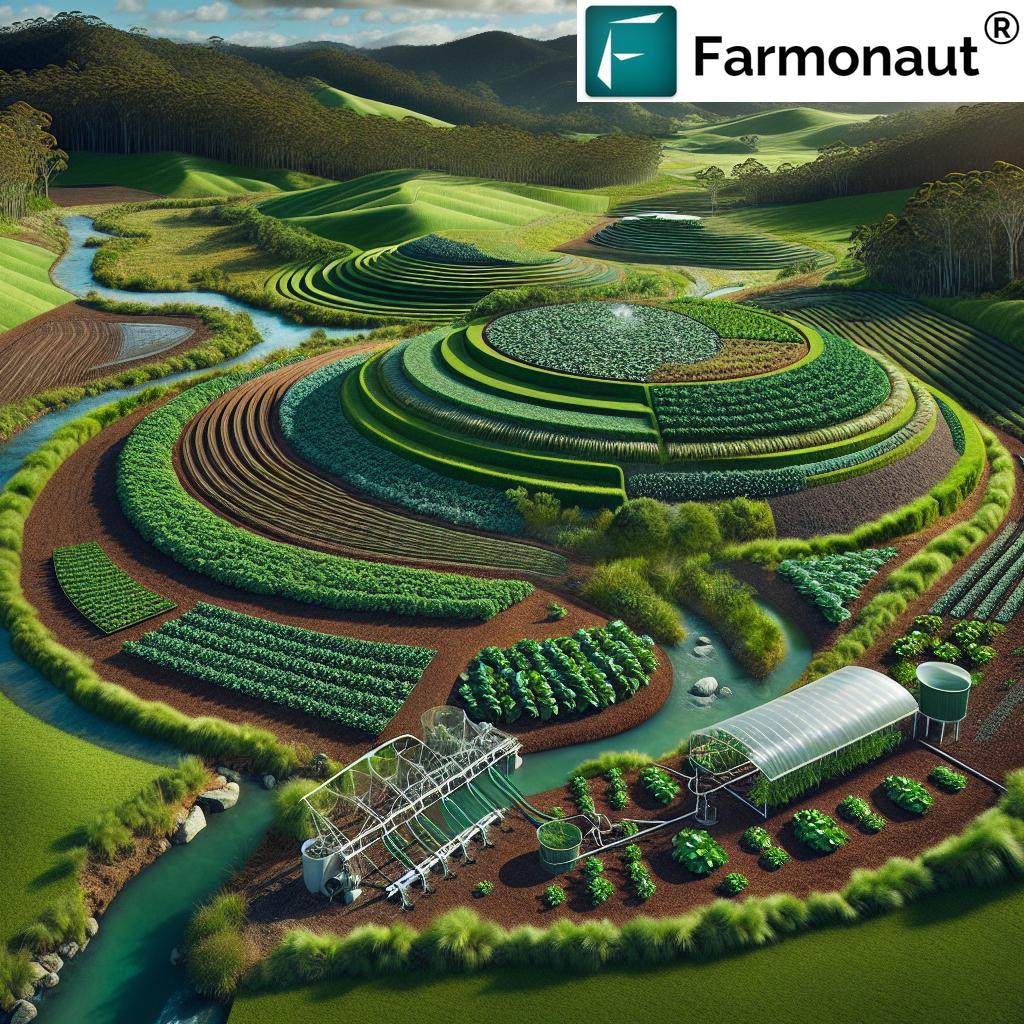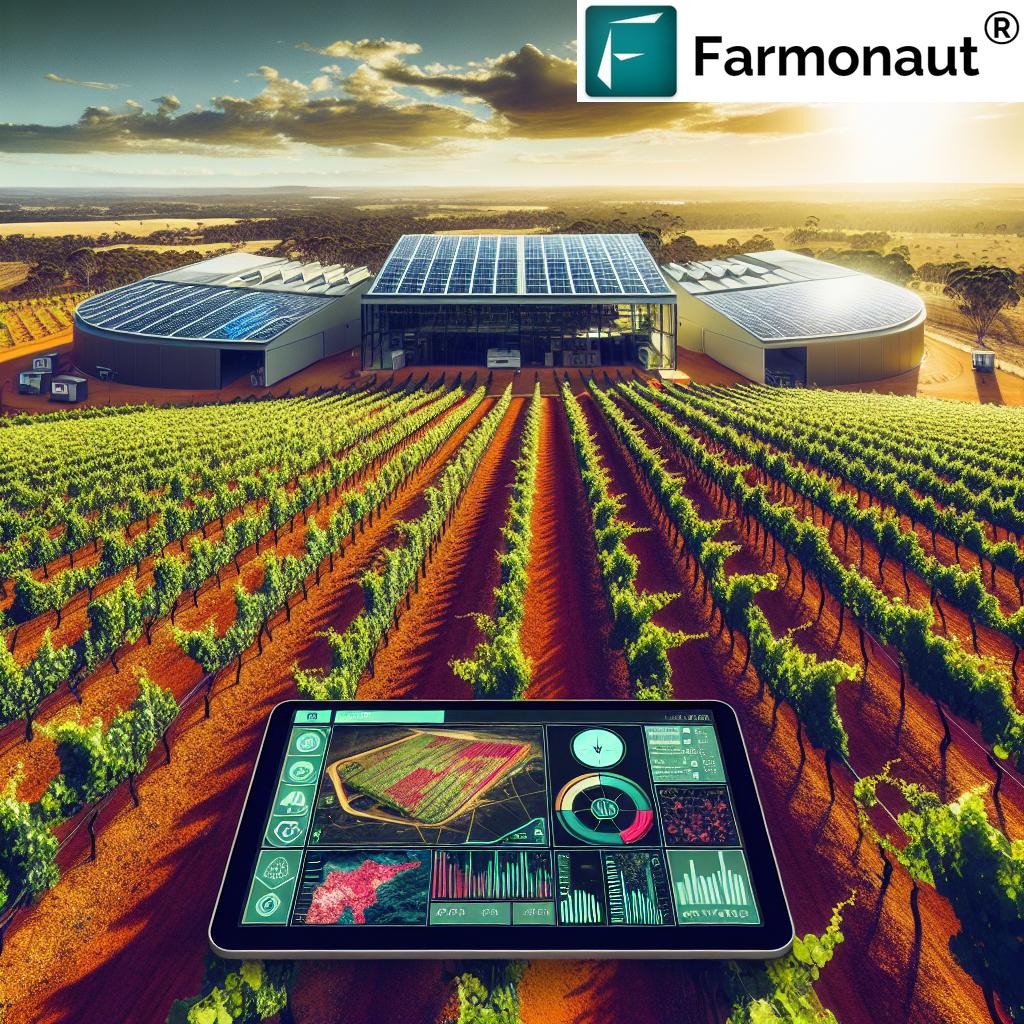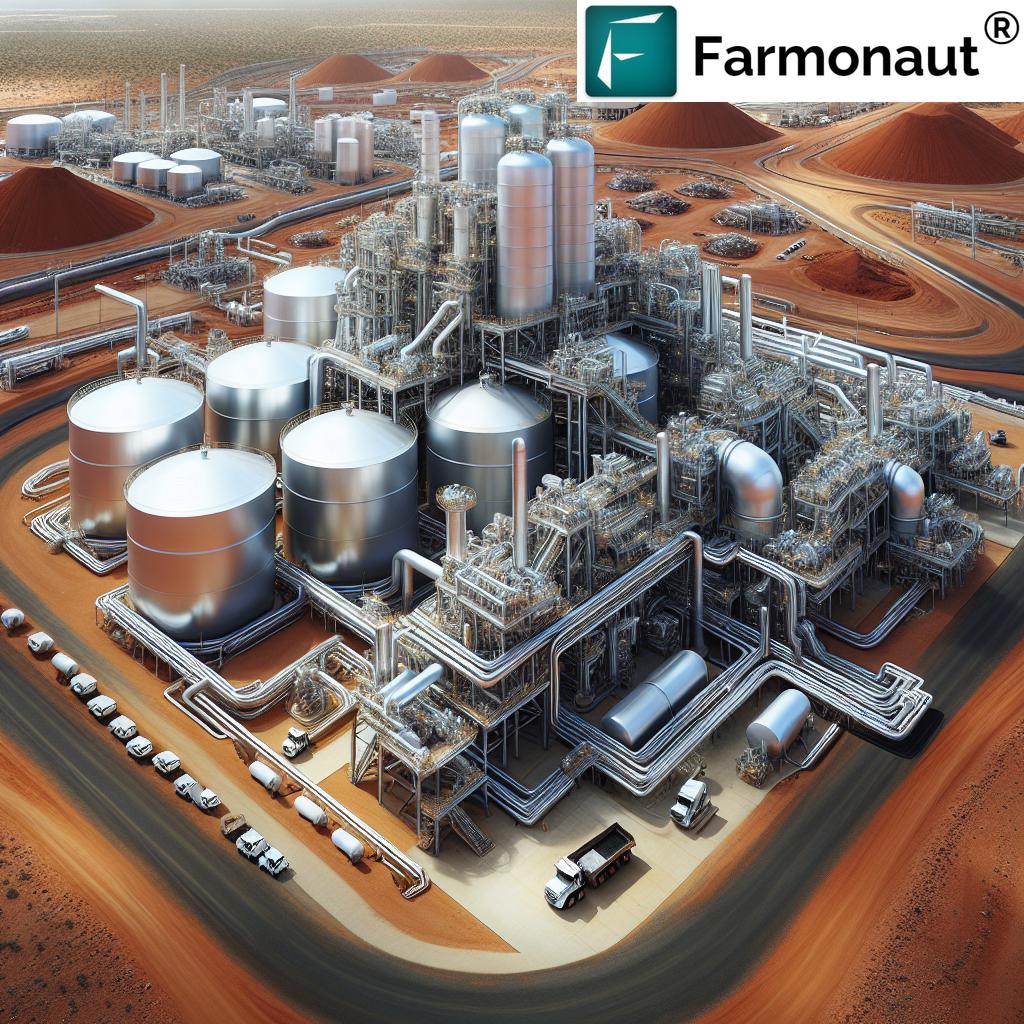Artificial Intelligence Adoption: 7 Aussie Wine Biz Opportunities
“Over 60% of Australian wineries plan to adopt AI tools by 2025 to enhance production efficiency.”
Introduction – The Transformative Shift in Australian Wine Industry
The artificial intelligence adoption in Australian wine industry business opportunities narrative has never been more compelling. As we approach 2025, AI technologies are driving a transformative shift across every stage of Australia’s globally recognized wine sector—from vineyard management and harvesting to quality control, logistics, marketing, and beyond.
This revolution is not just about automation; it’s a strategic reimagining of how wineries in key regions like Barossa Valley and Margaret River optimize resource use, respond to climate pressures, boost sustainability, and deliver exceptional products to consumers in Australia and global markets.
By leveraging data, artificial intelligence drones equipped with multispectral and hyperspectral sensors, satellite imagery, machine learning models, and blockchain-enabled systems, Australian wineries are unlocking new business opportunities, enhancing operational efficiency, and improving profitability while aligning with changing consumer expectations.
Trivia: AI Impact in Action
“AI-powered quality control has reduced wine spoilage rates in Australian wineries by up to 30% since 2022.”
Why AI? Unlocking Business Opportunities in the Australian Wine Industry
The adoption of artificial intelligence in the Australian wine industry is driven by a confluence of emerging technologies, data-driven decision-making, and evolving consumer expectations. Today, the industry faces unprecedented challenges: unpredictable weather due to climate change, labor shortages, regulatory compliance demands, and shifting markets. AI offers a suite of powerful tools to address these issues head-on—optimizing efficiency, reducing waste, enhancing product quality, and building a more sustainable business model fit for 2025 and beyond.
- Precision viticulture deploys artificial intelligence drones and AI-driven satellite imagery to offer granular, real-time insights into vineyard health.
- Predictive analytics enable wineries to plan operations around phenological stages, labor, and logistics, mitigating risks from unpredictable weather.
- AI-powered robotics streamline harvesting and packaging, lowering costs and improving output.
- Supply chain AI optimizes distribution, tracks inventory, and forecasts market trends, equipping Australian wineries to lead on the global stage.
- Sustainability is no longer an ideal—AI actively enables responsible resource management and compliance with key environmental standards.
- Personalized marketing through AI platforms is helping brands reach new generations of eco-conscious consumers.
In this comprehensive guide, we uncover the 7 pivotal AI opportunity areas reshaping the Australian wine industry, complete with comparative insights, integration examples, and accessible technologies propelling this transformative shift.
The 7 Key AI Adoption Opportunities for Australian Wineries
Below, we detail the seven most significant opportunities created by artificial intelligence adoption in the Australian wine industry business opportunities landscape for 2025 and beyond.
1. Precision Viticulture with Artificial Intelligence Drones & Satellites
Overview: At the first and most pivotal stage of wine production—vineyard management—precision viticulture integrates artificial intelligence drones and artificial intelligence satellite data for a bird’s-eye view of every vine, row, and plot.
- Technologies Used: Multispectral and hyperspectral sensors mounted on AI-driven drones and satellites.
-
Key Applications:
- Monitoring vine health, soil moisture, and nutrient levels down to plant level, with spatial precision previously unimaginable.
- Detecting pest infestations, disease outbreaks, and irrigation anomalies in real-time.
- Algorithms analyze data to identify underperforming areas or potential threats, enabling viticulturists to make precision interventions—from optimizing irrigation and pesticide application to targeted nutrient delivery.
-
Benefits:
- Reduces waste and operational costs by using only what is needed, where it is needed.
- Enhances grape quality, vital in a climate-vulnerable country like Australia.
- Critical for both large-scale wineries and boutique producers in iconic regions such as the Barossa Valley, Margaret River, and the Yarra Valley.
AI satellite-based solutions, such as those offered by Farmonaut, democratize this level of insight by providing cost-effective, scalable, and real-time large-scale farm management tools, accessible on Android, iOS, and web applications.
For developers and larger operations, Farmonaut’s satellite and AI API can be directly integrated within existing agronomy or logistics dashboards. Developers can consult Farmonaut’s comprehensive API Developer Docs for implementation.
2. AI Predictive Analytics for Vineyard Operations
Overview: AI-powered predictive analytics revolutionize how wineries anticipate, plan, and react to environmental and production variables.
-
Capabilities:
- Forecasting phenological stages such as flowering, berry set, and harvest readiness.
- Advanced analytics model weather, soil, and plant growth trends to mitigate risks from unpredictable climate events in regions like the Barossa Valley and Margaret River.
- Enabling better planning of seasonal labor, logistics, and resource allocation.
-
Impact:
- Reduces waste and operational costs by aligning resources with actual vineyard needs.
- Ironclad readiness for sudden weather changes—crucial as climate-driven risks increase.
Predictive insights also support input management, irrigation scheduling, and pesticide application, contributing to both short-term profits and long-term sustainability.
3. Automated Robotic Systems for Harvesting and Handling
Overview: Introducing intelligent automation into the physically demanding areas of harvesting and fruit handling is a game-changer for wineries of every scale.
-
Applications:
- Robot-guided harvesters equipped with AI sensors identify clusters by ripeness and selectivity, reducing fruit damage.
- Automated guided vehicles and bottling lines improve packing efficiency, reduce human error, and lower labor costs during peak periods.
-
Benefits:
- Scalability for both small and large wineries, meeting market demands even during labor shortages.
- Enhanced consistency and product quality.
4. AI-Driven Quality Control & Fermentation Optimization
Overview: AI is revolutionizing quality control through advanced monitoring —from grape analysis pre-fermentation to dynamic adjustment of fermentation parameters and post-production sampling.
-
Process:
- Machine learning models analyze chemical compositions, sugar content, acidity, and phenolic levels during every stage of fermentation.
- AI systems optimize fermentation time and temperature automatically, ensuring consistent product quality and flavor expression.
- Sensors in bottling and packaging lines detect defects, fill levels, or contaminants, minimizing human error and reducing product spoilage.
-
Value:
- Lower spoilage rates (as evidenced by a 30% reduction since 2022 in Australia).
- Enhanced reliability and market confidence in Australian wine.
5. Smart AI Supply Chain & Inventory Management Systems
Overview: In today’s competitive environment, supply chain resilience and agility are central to unlocking new business opportunities in the global wine markets.
-
System Features:
- AI tracks inventory across wineries, processing centers, and distribution depots automatically.
- Predicts demand trends in both domestic and international markets using consumer, retailer, and weather data.
- Optimizes distribution routes, shipping frequency, and cold-chain logistics for efficiency and timely deliveries.
-
Business Impact:
- Reduces overstock, shortages, and associated waste.
- Equips producers to stay aligned with evolving consumer trends and unpredictable global market shifts.
6. Sustainability Gains through AI Integration
Overview: Environmental impact monitoring and regulatory compliance are major business drivers. AI’s precision directly fuels both profitability and sectoral sustainability for vineyard and winery operations.
-
How AI Drives Sustainability:
- Minimizes resource input (water, nutrients, pesticides) via targeted delivery, informed by real-time AI data.
- Tracks energy usage, water conservation metrics, and greenhouse gas emissions.
- Makes compliance with carbon footprint targets and certifications (like organic or carbon neutral) measurable and achievable.
- Learn more about Farmonaut’s Carbon Footprinting solutions designed for Australian agricultural and wine producers—quantifying and optimizing environmental impact.
7. AI-Powered Marketing, Traceability, and Consumer Engagement
Overview: Beyond production, AI adoption in Australian wine industry business opportunities is most visible in marketing and customer engagement—empowering wineries to build brand loyalty and connect with modern consumers.
-
Features:
- Real-time analysis of consumer behavior, purchase history, and social media trends to craft highly targeted, timely marketing campaigns.
- Blockchain-enabled traceability—consumers can verify the origin, authenticity, and sustainable credentials of the wine bottle they buy.
- Personalized recommendations: AI-powered chatbots and virtual sommeliers engage visitors on winery websites and e-commerce platforms.
-
Opportunity:
- Appeals to the growing, younger, sustainability-minded demographic crucial to the future of Australian wine markets.
- Builds transparency and trust—key for both the Australian cotton industry and wine sectors, addressing growing consumer demand for ethical sourcing and environmental responsibility.
- Explore how Farmonaut’s blockchain-based traceability solutions can be leveraged by wineries to establish transparency and consumer trust across supply chains.
Comparison Table of AI Opportunities in the Australian Wine Industry
| AI Application | Business Opportunity | Estimated Efficiency Gain (%) | Estimated Cost Reduction (%) | Potential Sustainability Impact |
|---|---|---|---|---|
| Precision Viticulture (Drones/Satellite) | Site-specific interventions, improved yield/quality | 25–40 | 20–35 | Major reduction in water, chemical usage, and waste |
| AI Predictive Analytics | Accurate harvest timing, proactive labor/logistics | 15–25 | 10–20 | Resource and risk optimization |
| Automated Robotics | Reduced labor, higher throughput | 20–30 | 15–25 | Consistent quality, less food loss |
| AI Quality Control & Fermentation | Reduced spoilage, improved product consistency | 10–20 | 15–30 | Less waste, better energy use |
| AI Supply Chain & Inventory | Efficient distribution, less stock-out/overstock | 15–20 | 10–18 | Optimized resources, improved cold-chain efficiency |
| AI-Supported Sustainability | Carbon/footprint tracking, resource optimization | 10–18 | 15–22 | Supports eco-certifications, carbon neutrality |
| AI Marketing & Traceability | Personalized campaigns, increased consumer trust | 7–15 | 5–12 | Informs ethical consumer choices, enhances accountability |
Farmonaut: Democratizing AI and Satellite Innovations for Australian Agriculture
As a pioneering satellite technology company, Farmonaut is committed to making AI and satellite-driven insights affordable and accessible for Australian wineries, growers, and agricultural enterprises. Our platform harnesses advanced satellite-based monitoring, the Jeevn AI advisory system, blockchain solutions, and fleet/resource management to support:
- Real-time monitoring: Access actionable data and AI-based advisory systems for everything from vegetation health (NDVI) to soil moisture and nutrient status—empowering actionable, site-specific interventions.
- Environmental compliance: Track and report carbon footprint metrics for sustainability pledges and certification schemes.
- Blockchain traceability: Build consumer trust by offering supply chain traceability—from vineyard to bottle.
- Fleet/resource management: Optimize equipment and logistics, reduce downtime, and minimize fuel/emissions.
- Crop loan & insurance: Leverage satellite-based crop loan and insurance verification, improving access to finance for growers with objective risk assessment.
- API & App access: Seamless integration with mobile/web apps and developer APIs, supporting both individual and enterprise usage.
The agriculture industry in Australia—from the wine sector to the Australian cotton industry—benefits from Farmonaut’s cost-effective, scalable monitoring and traceability solutions, designed for today’s climate-driven challenges.
For forest advisory and plantation insights, Farmonaut also offers specialized crop-plantation and forest advisory solutions, promoting sustainable diversification for growers.
Frequently Asked Questions (FAQ)
What are the most significant AI-driven changes in Australian wineries for 2025?
AI adoption touches every stage—from precision viticulture with drones and satellite monitoring to automated harvesting, fermentation optimization, supply chain AI, blockchain traceability, and personalized marketing. Collectively, these drive higher efficiency, quality, and sustainability.
How do AI technologies reduce resource waste and costs?
AI enables targeted interventions (irrigation, pesticide, nutrient delivery) using multispectral/hyperspectral data. Predictive models optimize labor and logistics, while automated robotics reduce spoilage and labor costs, resulting in significant waste reduction and greater operational efficiency.
What is the ROI for AI investment in Australian wine?
Estimated efficiency gains from AI range up to 40%, with cost reductions as high as 35% in precision viticulture alone. Sustainability features can also boost entry into premium segments and markets seeking eco-certification.
How does AI-powered traceability benefit wineries?
Blockchain traceability—like that enabled by Farmonaut’s solutions—lets consumers verify product origin, authenticity, and environmental credentials with confidence, boosting trust and empowering premium branding.
Are AI-driven solutions accessible for small or medium-sized producers?
Yes, newer cloud and satellite-based platforms (e.g., Farmonaut) are built for affordability, accessibility, and easy app/API integration—no expensive hardware or in-house data science required.
How can I deploy AI/satellite tools in my vineyard?
Begin with remote sensing for crop health (see Farmonaut’s large-scale management tools), AI-driven advisory for growing and harvesting (forest/crop advisory), and blockchain for product traceability.
Where can I learn more about carbon tracking in wine production?
Discover Farmonaut’s carbon footprinting platform, which offers environmental impact monitoring and compliance tools for wine businesses.
How does Farmonaut ensure sustainability and affordability?
We democratize access to artificial intelligence satellite and AI-driven analytics, making them affordable to everyone from boutique wineries to major players. Subscription and API access ensure you pay for the data and insights you need, reducing upfront costs and scaling with your business.
Conclusion – Thriving in 2025 and Beyond
The artificial intelligence adoption in Australian wine industry business opportunities outlook for 2025 is bright: AI is no longer experimental, but pivotal. From the ground (or vine) up—via precision viticulture, predictive analytics, robotic automation, quality control, and AI-driven supply chain—AI-driven technologies are ensuring greater operational efficiency, reduced costs, heightened product quality, and global competitiveness.
As climate threats intensify and consumer demands shift, wineries embracing AI will be the ones to thrive—not just surviving disruption, but building legacies rooted in sustainability and innovation. With accessible platforms like Farmonaut, the barriers to entry are melting away, opening the door to a smarter, more transparent, and profitable future for the entire Australian wine industry.
Ready to unlock efficiency, sustainability, and growth for your 2025 wine business? Explore Farmonaut’s App and API now.
For further resources, analysis, and step-by-step integration guides, consult Farmonaut’s API Developer Docs or contact our support for solution roadmaps tailored to Australian conditions—from Barossa to Margaret River and beyond.













